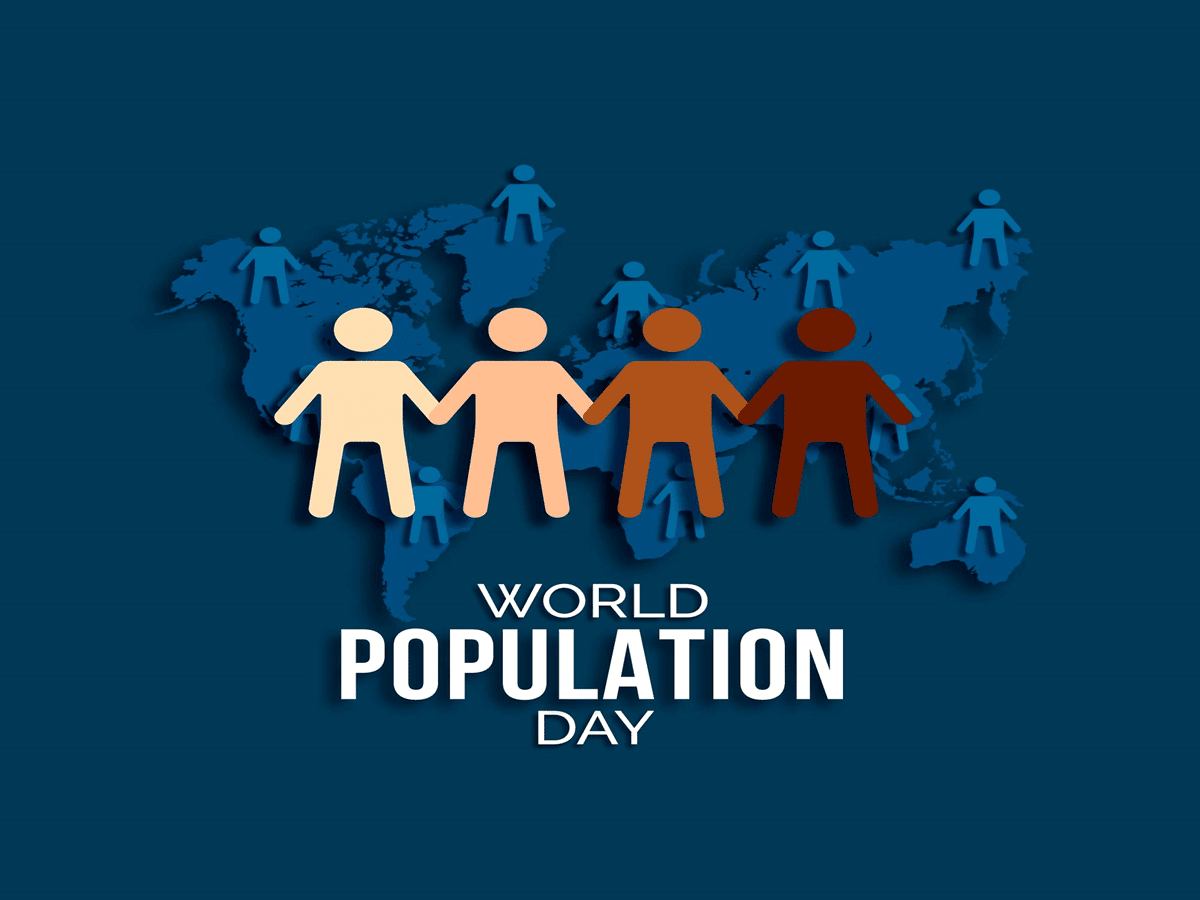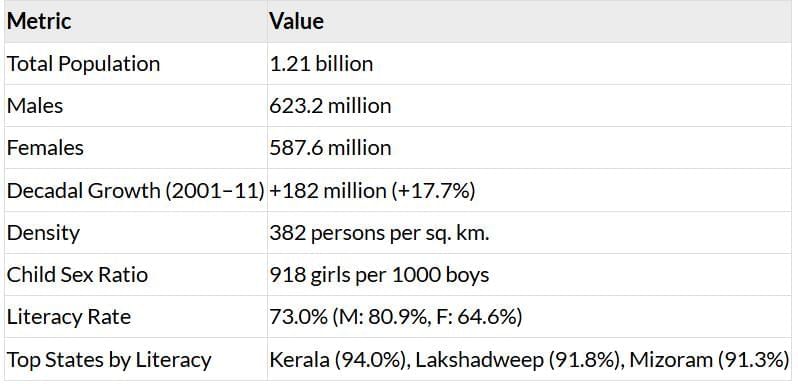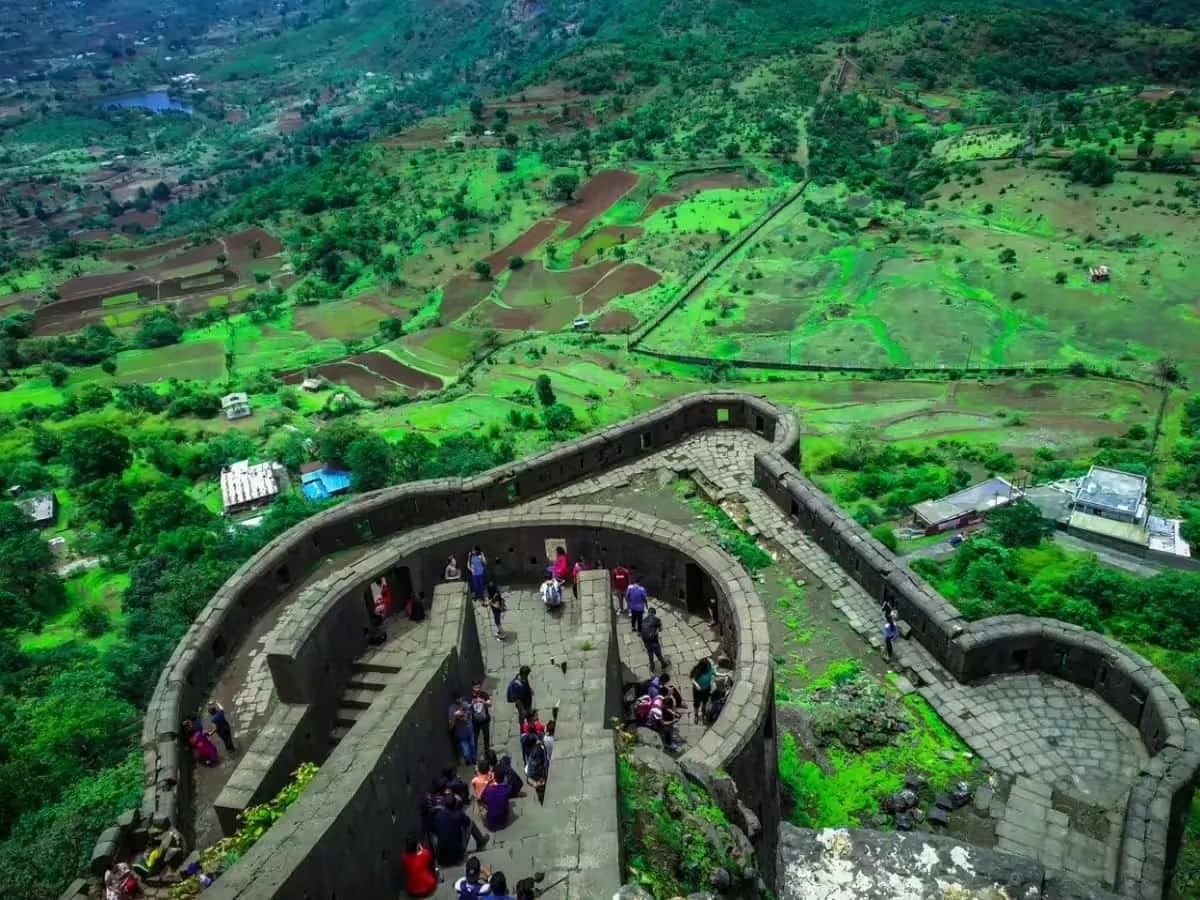PIB Summary - 12th July 2025 | PIB (Press Information Bureau) Summary - UPSC PDF Download
World Population Day 2025

Theme: “Empowering young people to create the families they want in a fair and hopeful world.” Census 2027: A Paradigm Shift Scheduled Timeline:
- Phase 1 – Houselisting & Housing Census: Starts April 2026.
- Phase 2 – Population Enumeration: Begins March 2027 (Reference date: 1 March 2027; exception: 1 October 2026 for snow-bound areas).
- Postponed from 2021 due to COVID-19, making it India’s first census after a 16-year gap.
Digital-First Features:
- Fully paperless, digital census.
- Mobile App & online self-enumeration (a first in Indian census history).
- Central Census Monitoring & Management Portal.
- Code Directory to streamline data processing and standardization.
- 35 lakh+ field functionaries to be trained digitally.
Caste Enumeration: A Historic Breakthrough
- First-time inclusion of caste for all communities since independence.
- Post-1947 practice: Caste data limited to SC/ST only.
- SECC 2011 collected caste data but was not officially released; 2027 will integrate caste in main census —addressing concerns over transparency and politicization.
Historic Roots of Census in India Ancient References:
- Arthashastra (321–296 BCE): Kautilya emphasized population count for governance.
- Ain-e-Akbari (1590s): Abul Fazl chronicled demographic and economic data under Akbar.
Modern Census Beginnings:
- 1865–1872: First attempts, not simultaneous.
- 1881: First synchronized census—established India’s decadal census tradition.
Legal Backbone:
- Census Act, 1948 & Census Rules, 1990— statutory basis for census operations.
Post-Independence Census Highlights (1951–2011)
 Census 2011: Scale, Structure & Data Operational Metrics
Census 2011: Scale, Structure & Data Operational Metrics

Key Demographic Findings

SECC 2011: Socio-Economic & Caste Census Conducting Ministries:
- Rural: Ministry of Rural Development
- Urban: Ministry of Housing & Urban Affairs
Purpose:
- Data for welfare targeting, program design, and beneficiary selection.
Tech Leap:
- Paperless enumeration using 6.4 lakh handheld devices
- Addressed 1.24 crore grievances with 99.7% resolution
Caste Component:
- Data collected, but caste-wise data not made public
Why Census 2027 Matters
- Policy & Planning: Foundational for resource allocation, electoral boundaries, and welfare schemes.
- Federal Empowerment: Caste data enables targeted state-level interventions and accurate backward class identification.
- Global Significance: India may retain its position as world’s most populous country, highlighting its need for granular governance tools.
- AI & Big Data Integration: Digital census may evolve into a real-time demographic dashboard for India’s planning architecture.
India in the Global Census Context
- World’s largest census exercise involving over 130 crore individuals.
- Combines scale, complexity, diversity, and now digitization, setting a new global standard for democratic data collection.
Demographic Futures — Expanded Perspectives
- Comparative Lens: India’s age structure contrasts with ageing societies like Japan (median age: 49) vs. India (~28) — Census 2027 will sharpen India’s long-term demographic edge.
- Labour Market Integration: Census data can help map NEET (Not in Education, Employment or Training) youth – currently ~27% of youth (CMIE).
- Skilled vs. Unskilled Divide: Important for recalibrating Skill India strategy and vocational training.
- AI + Population Analytics: Use of demographic AI models to simulate regional fertility trends and future age pyramids.
Urbanization and Migration Realities — Deeper Layers
- First-Time Urban Count Clarity: Many “census towns” (urban in nature but governed rurally) to be properly identified — critical for urban finance devolution and AMRUT 2.0 targeting.
- Real Estate and Infrastructure: Housing census data will shape PM Awas Yojana, RERA regulations, and rent-control policy in Tier-2/3 cities.
- Transport & Commuting Census: Opportunity to map last-mile transport stress and commuting zones, helping shape urban mobility blueprints.
- Water Stress & Urban Demography: Linking urban population maps with groundwater and surface water usage patterns—crucial for Smart Cities 2.0.
Inclusion, Equity & Representation — Additional Insights
- Intersectional Analysis: Combine data on gender, caste, location, and disability to uncover multi-layered vulnerabilities—key for intersectional policymaking.
- Invisibility of Nomadic Tribes: Census may finally help enumerate Denotified and Nomadic Tribes who are often excluded from welfare due to lack of fixed residence.
- Mental Health Enumeration:. missed opportunity in 2011—Census 2027 can integrate self-reported indicators of mental well-being to influence Ayushman Bharat 2.0.
- Digital Identity vs. Demographic Identity: How will Census data align or contrast with Aadhaar-linked service access?
Developmental Planning & SDG Alignment — Advanced Linkages
- Ecosystem Mapping: Census 2027 can feed into multi-sectoral planning dashboards — combining data from Jal Jeevan Mission, Swachh Bharat, and Ujjwala schemes.
- Fiscal Federalism Alignment: Could influence the next Finance Commission formula, especially based on population vs. performance debates.
- Real-Time Policy Simulation: Census-linked analytics could simulate impact of UBI, food subsidy reforms, or reservation quotas on different castes or income groups.
- Global Benchmarking: India’s Census 2027 will become a model for Global South data governance, especially for low-cost digital enumeration.
Conclusion: Census 2027 = Tech + Trust + Truth
- India’s Census 2027 is more than a demographic count—it is a data democracy revolution.
- With caste data inclusion, digital tools, and evidence-based design, India is poised to align its developmental vision with the aspirations of its young, diverse, and dynamic population.
- The exercise will shape 2020s policy, 2030s development, and 2040s India.
Maratha Military Landscapes of India Inscribed in the UNESCO World Heritage List as India’s 44th Entry

Cultural and Historical Significance
- Civilizational Continuity: The 12 forts, constructed between the 17th and 19th centuries, embody the military spirit of the Maratha Empire, which was known for its decentralized guerrilla warfare and stronghold-based defense.
- Living Heritage: These forts are recognized by UNESCO for showcasing a living cultural tradition and strong historical connections to regional identity and resistance movements, particularly against the Mughals and British.
- Chronicles of Resilience: Forts like Raigad (the capital of Chhatrapati Shivaji), Pratapgad (site of Afzal Khan’s defeat), and Shivneri (Shivaji’s birthplace) are crucial in the story of Indian self-rule and defiance.
- Hill forts: Examples include Salher and Shivneri, which are adapted to the rugged terrain of the Sahyadri mountains.
- Island forts: Such as Sindhudurg and Suvarnadurg, which were designed for maritime surveillance and naval defense.
- Forest/hill-plateau forts: For instance, Pratapgad and Panhala, which blend natural camouflage with defensive features.
Architectural and Strategic Ingenuity
- Maratha Military Architecture: Focused on geographic advantage rather than size, using locally available basalt stone, multi-tiered walls, hidden pathways, and natural elevation for fortification.
- Decentralized Fort System: The forts operated as a network of strategic outposts for rapid communication and flexible resistance, rather than as standalone structures.
- Maritime Defence Legacy: Island forts like Sindhudurg and Khanderi reflect India’s early naval ambitions and expertise in coastal military architecture.
- Technological Relevance: Some forts featured rainwater harvesting systems, granaries, and self-sustaining eco-defence systems, showcasing early principles of sustainable architecture.
Global Heritage & Diplomatic Relevance
- India’s 44th World Heritage Site: The forts rank 6th globally, 2nd in the Asia-Pacific region, after China, enhancing India’s cultural diplomacy and soft power.
- UNESCO 47th Session, Paris: India’s nomination was backed by 18 of 20 State Parties after a brief deliberation, reflecting global recognition of regional and indigenous heritage systems.
- India on World Heritage Committee (2021–2025): India’s membership strengthens its influence in global heritage governance, following the inscription of the Moidams of Charaideo in 2023.
Institutional, Governance, and Policy Dimensions
- Heritage Governance: The Archaeological Survey of India (ASI) is the nodal agency for heritage governance. Some forts are protected by ASI while others are under Maharashtra’s Directorate of Archaeology and Museums, exemplifying shared federal heritage management.
- UNESCO Nomination Process: The nomination process involved 18 months of preparation, including a mission by ICOMOS, technical consultations, and stakeholder coordination, demonstrating India’s capability for global-standard heritage documentation.
- Tentative List & Future Roadmap: India has 62 sites in the Tentative List for UNESCO nomination, including sites from Odisha, Himachal Pradesh, and Gujarat. Only one nomination per year is allowed per country, requiring strategic cultural prioritization.
Environmental and Ecological Resilience
- Eco-sensitive Engineering: Many Maratha forts, such as Raigad and Pratapgad, were constructed using contour-sensitive methods that avoided large-scale deforestation and ecological disruption.
- Sustainable Water Management: Forts like Lohgad and Rajgad incorporated rainwater harvesting tanks, step wells (kunds), and natural aquifers, ensuring year-round water availability without external dependence, aligning with climate-resilient infrastructure principles.
- Climate-Adaptive Architecture: The forts were designed to withstand high rainfall in the Konkan region, sea-wind exposure, and the altitude of the Sahyadri mountains, showcasing vernacular green design.
- Modern Relevance: These forts can serve as case studies for eco-architecture and disaster-resilient planning, particularly in hill and coastal areas.
Knowledge Systems and Indigenous Technology
- Military Intelligence Networks: The forts utilized visual signaling towers, hidden tunnels, and watch posts to create an early form of strategic communication system.
- Construction Science: The Marathas mastered basalt rock-cutting, natural stone masonry without lime cement, and techniques for earthquake resilience.
- Knowledge Transmission: Construction knowledge was passed down through guilds (silpakars) and oral traditions, rather than formal manuals, exemplifying indigenous knowledge systems (IKS) recognized under the National Education Policy 2020.
- Weapon Systems & Storage: The strategic placement of granaries, ammunition depots, and war rooms indicates early concepts of military logistics.
Community Participation and Cultural Ownership
- Grassroots Custodianship: Local communities maintain or spiritually revere many forts, such as Shivneri, linked to local deities, and Pratapgad, which hosts fairs and festivals.
- Folk Memory & Oral Traditions: Ballads like “Powadas” that recount fort battles and fort-centric festivals, like Shiv Jayanti, help preserve living heritage.
- Youth Engagement: The growth of fort trekking communities, such as Sahyadri Trek Groups, fosters citizen-led conservation awareness.
- Local Livelihoods: Fostering eco-tourism, guide jobs, and local artisan revival linked to forts are crucial for cultural economy models.
Tech-Enabled Heritage Conservation and Promotion
- Drone Mapping & 3D Modelling: The ASI is working on creating digital inventories and restoration simulations for deteriorating sea forts using drone mapping and 3D modelling techniques.
- Augmented Reality (AR) Integration: Pilot projects are being initiated to use augmented reality for immersive storytelling, allowing virtual walkthroughs of forts like Raigad and Sindhudurg.
- Blockchain for Heritage Record-Keeping: There is potential for using blockchain technology in the future for tamper-proof documentation of repairs, site status, and funds disbursed related to heritage sites.
- Smart Heritage Corridors: There is an opportunity to integrate the forts into a Maratha Heritage Circuit under the Swadesh Darshan 2.0 scheme, featuring QR-coded information panels and mobile heritage apps.
Issuing Authority: UNESCO & the World Heritage Framework
- What is UNESCO?
- Full Form: United Nations Educational, Scientific and Cultural Organization
- Established: 1945
- Headquarters: Paris, France
- Mission: To promote global peace and sustainable development through education, science, culture, and communication.
- What is the World Heritage Convention?
- Adopted: 1972 (UNESCO General Conference)
- Title: Convention Concerning the Protection of the World Cultural and Natural Heritage
- Purpose: To identify and protect cultural and natural heritage sites of Outstanding Universal Value (OUV) to humanity.
- Members: 195 countries have ratified the convention (called State Parties), including India (joined in 1977).
- What is the World Heritage Committee?
- A 21-member intergovernmental body elected by the General Assembly of State Parties.
- Oversees the implementation of the Convention.
- Decides which sites get inscribed on the World Heritage List.
- India is a member for the term 2021–2025.
- What qualifies as a World Heritage Site?
- A site must possess Outstanding Universal Value (OUV).
- Meet at least one of 10 selection criteria:
- Criteria (i)–(vi): Cultural (e.g., architecture, tradition, heritage)
- Criteria (vii)–(x): Natural (e.g., biodiversity, ecology, landscape)
- The Maratha Military Landscapes were inscribed under criteria (iv) & (vi).
FAQs on PIB Summary - 12th July 2025 - PIB (Press Information Bureau) Summary - UPSC
| 1. What is the significance of World Population Day and how is it observed globally? |  |
| 2. What are the Maratha Military Landscapes of India and why were they inscribed in the UNESCO World Heritage List? |  |
| 3. How does the inscription of sites in the UNESCO World Heritage List impact local communities? |  |
| 4. What criteria must sites meet to be included in the UNESCO World Heritage List? |  |
| 5. What role do international organizations play in the preservation of heritage sites like the Maratha Military Landscapes? |  |
















